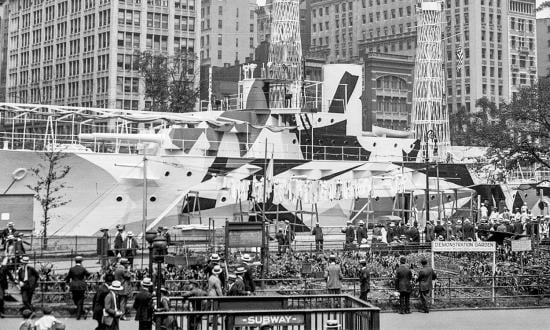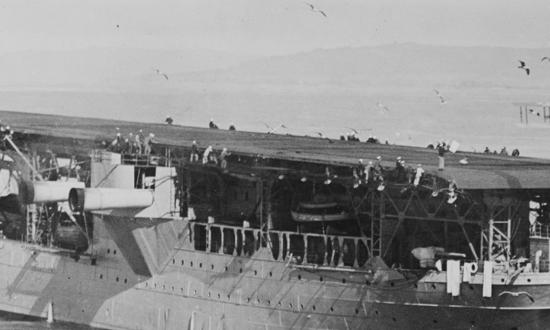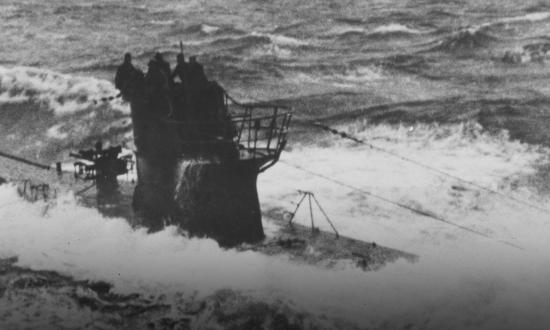Surface Fleet’s Operation Linebacker Role
Rex McCoy
I very much appreciated Edward J. Marolda’s article on Operation Linebacker ’72. The Navy’s contribution was second to none. I especially appreciate that Mr. Marolda noted the contribution of the surface fleet to the actions, which is sometimes overlooked. In that regard, Naval History magazine can be proud that it periodically reminds us of the surface fleet’s Vietnam War actions. Of particular note are Admiral James L. Holloway III’s August 2004 “Into the Lion’s Den,” Commander John G. Robinson’s August 2007 “Pounding the Do Son Peninsula,” and my own October 2012 “The Last Gunfights.” Keep up the good work!
Saving The Sullivans
Ron Furgerson
Thanks to the U.S. Naval Institute and Eric Mills for the article “Historic WWII Destroyer Survives Sinking Threat.” It would have been a tragedy had The Sullivans (DD-537) been allowed to sink. The rescue of this historic vessel is particularly important to me as she was my first ship. My third-class midshipman cruise on board her in the summer of 1962 holds very special memories. What a wonderful legacy of service and sacrifice is embodied in this proud ship. Truly we need the “We stick together” spirit of The Sullivans. Bravo Zulu to those who preserved this naval treasure.
Still Here: Cruisers of Yesteryear
John Bohnert
I’m a U.S. Navy veteran and a subscriber to Naval History magazine. Recently, I read the book Sweet Pea at War: A History of USS Portland. In the preface, it says there are no cruiser museum ships. As a former cruiser sailor—USS Columbus (CG-12)—I was very disappointed to learn that fact.
Then I saw the photo on page 3 of the August issue. It shows the light cruiser USS Little Rock (CL-92/CLG-4) alongside The Sullivans. They are both museum ships in Buffalo, New York.
I then went online and discovered there is a heavy cruiser, the USS Salem (CA-139), that is also a museum ship. It’s in Quincy, Massachusetts.
Thanks to Naval History magazine, this former cruiser sailor now knows there are two cruisers on display as museum ships. Thank you for clearing that up.
The Admiral’s Faith
Norman Polmar
The review of Admiral Hyman Rickover: Engineer of Power in the August issue raised the question of whether or not Rickover had converted away from Judaism.
Interviews with friends and subordinates of Admiral Rickover by Thomas Allen and myself for our book Rickover: Controversy and Genius (Simon & Schuster, 1982) confirmed that he had given up Judaism when he married Ruth Masters on 8 October 1931. They were married by an Episcopal priest, the Reverend William L. Brewster.
And when I interviewed Admiral Arleigh Burke for our book, he told me that when he was Chief of Naval Operations, and Rickover was embroiled in controversy related to his promotion to vice admiral in 1958, three rabbis had come to his office to make certain that he (Burke) knew that Rickover no longer considered himself of the Jewish faith, and thus religion was not a factor in that controversy.
Suicide by Sabotage?
Peter J. Durand
I enjoyed Stephen C. Ruder’s forensic examination of the 1917 Mare Island magazine explosion in the June 2022 issue ("Who Really Blew Up Mare Island?”). The author’s speculation about a murder-suicide by Neil “Charlie” Damstedt is very interesting, especially with regard to Damstedt’s individual insurance coverage. The author reveals that Damstedt had insurance coverage and further states that “no payment would have been made for death by suicide.”
This is true in most (but not all) plans of insurance, but only during the first two years of coverage in California. After those two years, the suicide exclusion no longer applies. So, if Damstedt had purchased the coverage prior to July 1915, his beneficiary would have received the death benefits. This means that Damstedt could have blown up the magazine secure in the knowledge that his beneficiary would get the death benefits.
In all likelihood, even if Damstedt had just purchased the coverage at the time of the explosion, the death benefits still would have been paid to his beneficiary. This assumes that Damstedt’s death certificate stated the manner of his death was accidental, as suggested by the author.
The law has a strong presumption against suicide. If the death certificate said the death was accidental, then the insurance company would have to prove the death was a suicide in order to avoid payment—a heavy burden on the facts.
The author has stated a case, in psychological autopsy terms, for suicide. Damstedt had endured several socially disrupting events, including spousal and personal illness, employment problems, and family problems. It definitely would have helped the assessment if Damstedt had left a suicide note, but as observed by the author, only about 30 percent of suicides leave notes. The suicide note would have been left at his home. If so, then the family would have been less inclined to reveal its existence, fearing the stigma that might attach to a death by suicide or the possibility of the insurance company’s denial of the death benefits.
Correction: On page 59 of the August issue, the hull number for the USS Hornet should read “CV-8.”






